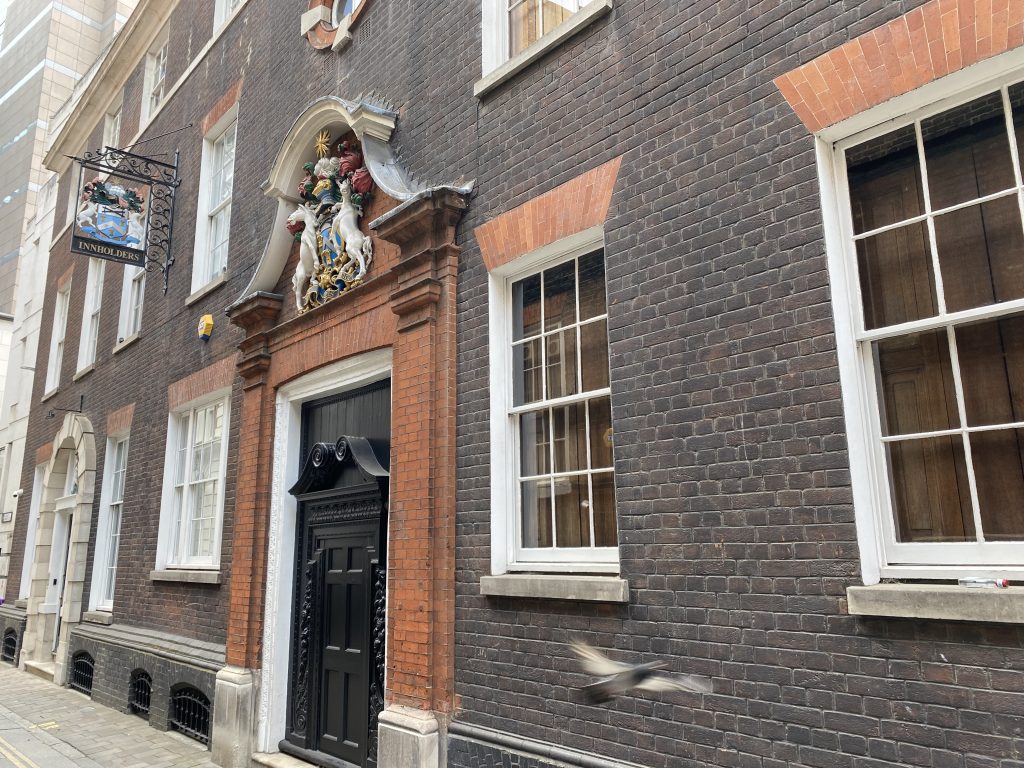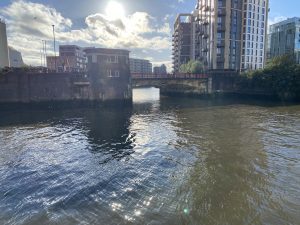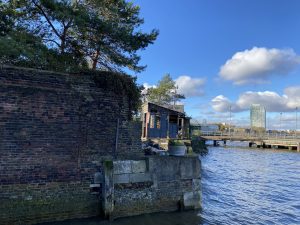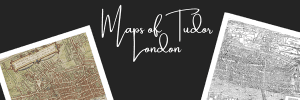Concentrated around Cannon Street Station are four halls of the City guilds. Along Dowgate Hill which runs down the western side of the station are those of the Tallow Chandlers, the Skinners and the Dyers. Just round the corner in College Street is another: the hall of the Innholders’ Company. The guilds dominated City commercial life from the twelfth to the end of the fifteenth centuries. They remained important in the following century though their transformation into convivial clubs with tenuous links to their original crafts was well under way.
Innholders’ Halll was largely rebuilt in the 1950s after bomb damage, but some of the version reconstructed in 1671 after the Great Fire survives on the inside. On the modern facade towards the street is a handsome seventeenth century door, sitting in a Victorian doorcase with a coat of arms made as a copy of the original.
The company has had a hall on the site since 1521. The earliest records of the guild date from the early 1300s and they adopted the name of the Guild of Innholders in 1473. They received their first charter in 1514. Charters allowed the guilds to acquire a corporate identity, which permitted them to act in a legal capacity, and crucially to receive endowments. On the other hand, incorporation cost a lot of money and was a way for the crown, in this case Henry VIII, to raise money.
London’s inns first grew to prominence in the thirteenth century when they provided accommodation for the growing numbers of traders and pilgrims. Previously, many of these had relied on London’s priories. The inns offered bed, boarding and stabling, and this distinguished from taverns and alehouses. The official recognition of the name ‘innholders’ in 1473 was important in their attempt to enforce their monopoly in providing accommodation.
London’s inns went into decline with the end of coaching and the advent of the railways and as the City underwent a decline in population and became a place to commute to.
The modern guild has links with the hospitality industry. Among its work is the Clink Charity which aims to reduce reoffending rates and to find its students jobs within the sector.
Explore more about the guilds on our Medieval London Walk.





